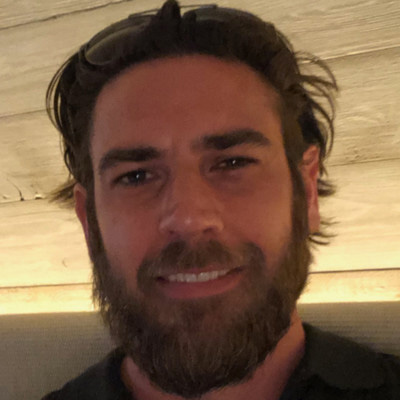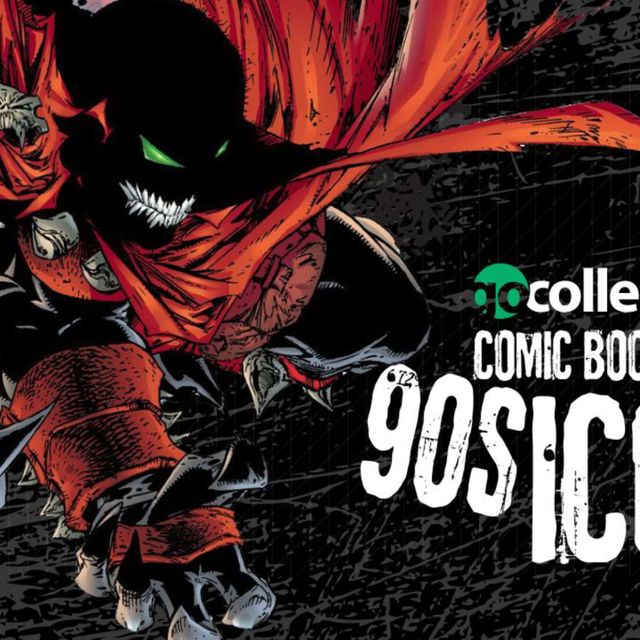via The Blog From Another World
 Our final interview for our amazing Zenescope Month is with Romanian artist Victor Drujiniu, who recently completed The Waking. This dark, thrilling zombie tale explores the living dead–with an explosive twist! We asked Drujiniu about what attracted him to The Waking, how he started his career in art, and what's coming up next:
Our final interview for our amazing Zenescope Month is with Romanian artist Victor Drujiniu, who recently completed The Waking. This dark, thrilling zombie tale explores the living dead–with an explosive twist! We asked Drujiniu about what attracted him to The Waking, how he started his career in art, and what's coming up next:
TFAW.com: What's your educational background–did you study art or are you self-taught?
Victor Drujiniu: Well, I kind of did both. I was self taught up until high school. Then I applied for the Arts High School in my home town: Saint George, Covasna district, Romania. But even there, most of the study was done individually, at home, based on what we were taught at school and depending on the level of interest each manifested. By then I was drawing from every comic that got into my hands.
After graduating high school as first graduate, I went to the Arts Faculty within the West State University of Timisoara, where I had the luck to meet a professor who shared the same interest for the figurative art and who helped a lot especially, where compositions are concerned.
TFAW.com: What do you like best about drawing comics?
VD: Everything. I like the fact that you must be able to practically draw everything in order to better illustrate what you want to "tell" through your drawings. I love to draw different human characters and their moods or emotions. I like drawing these realistic backgrounds based on photo references, to make the story more believable and reliable. Something the readers can relate to. But what makes comics even greater is that you get to draw both reality and fantasy; you can always use realistic elements and create new ones according to what suits the story better.
 TFAW.com: What sort of stories attract you? What types of stories do you feel suit your style the best?
TFAW.com: What sort of stories attract you? What types of stories do you feel suit your style the best?
VD: The stories that definitely attract me the most are the superhero stories. Which is understandable, considering I grew up reading them and drawing from them. But once I got into the industry I also started expanding my horizons, and I really found myself attracted to dramatic, noir, dark graphic novels too. And if they are superhero-based, that's even better. ![]()
I couldn't tell what types of stories suit me best. I just feel I can take on everything I'm assigned. The more genres, the better. Because there's so much you can learn from every single experience.
TFAW.com: How did you come to work for Zenescope?
VD: Through my former agent: Romulo Suarez, from Lynx Studios. He was the person who helped me make my first steps in the industry, by introducing me to Raven Gregory at Zenescope.
TFAW.com: What do you think you've learned over the years from your various projects at Zenescope?
VD: Oh, I learned a lot. First of all these were my very first professional assignments/projects. That fact itself was a first lesson. I learned what making a comic is all about: starting with the reading and understanding of the script, the process of making the layouts and then transferring all that data onto the final pages. I learned what the harsh fight with the deadline is! This is a word you won't escape for as long as you work in this field. So I definitely learned everything I needed to know in order to perform professionally in this line of work.
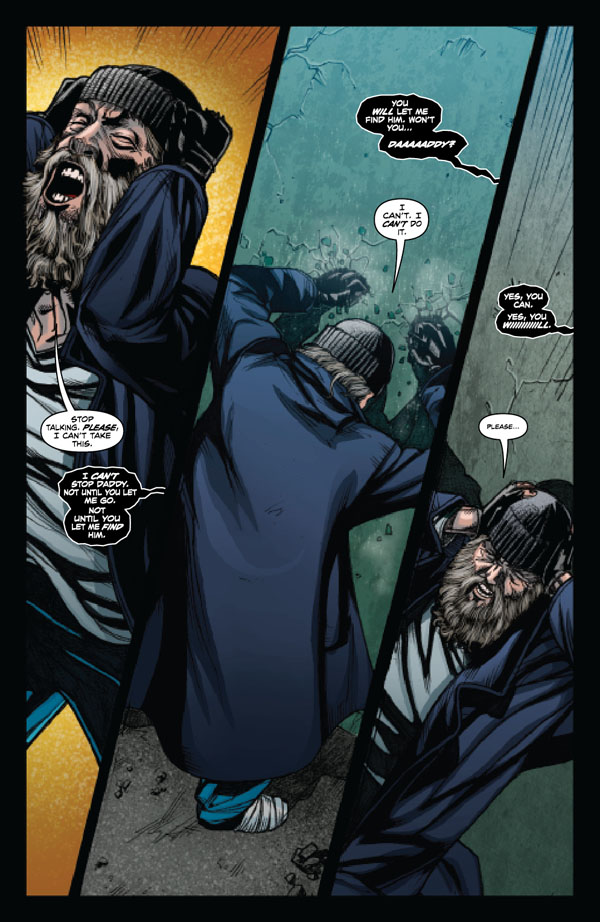 TFAW.com: How did you get involved with The Waking?
TFAW.com: How did you get involved with The Waking?
VD: Well, it was Raven's idea. Based on our previous collaborations he offered me the opportunity of working on this highly promoted project. The Waking was my first big project as a professional comic artist and I owe him a lot for that.
TFAW.com: How did you prepare to design the zombies? Did you check out any movies or comics?
VD: It was something new for me, as this kind of comics wasn't exactly my type. If I saw zombies in comics prior to this, it was only if they appeared in one of the superhero comics I read. So I was both excited and afraid at first. But I did a little research on the Internet watching comics and shots from zombie movies, which was more than enough to help me decide how they were going to look through my eyes.
TFAW.com: There's a huge uprising in zombie stories in pop culture lately. Why do you think people enjoy zombies so much?
VD: Well, I noticed that people are more and more attracted to the horror genre these days. May it be movies, or comics. And zombies are somehow iconic and very representative for this genre. People always wanted to know more about what happens after the physical death; most religions and cultures in the world share this common belief that there has to be something more after it. Zombies are just one representation of such belief. And Hollywood took great care in popularizing this cult. So it's our fascination with the creature returned from the dead.
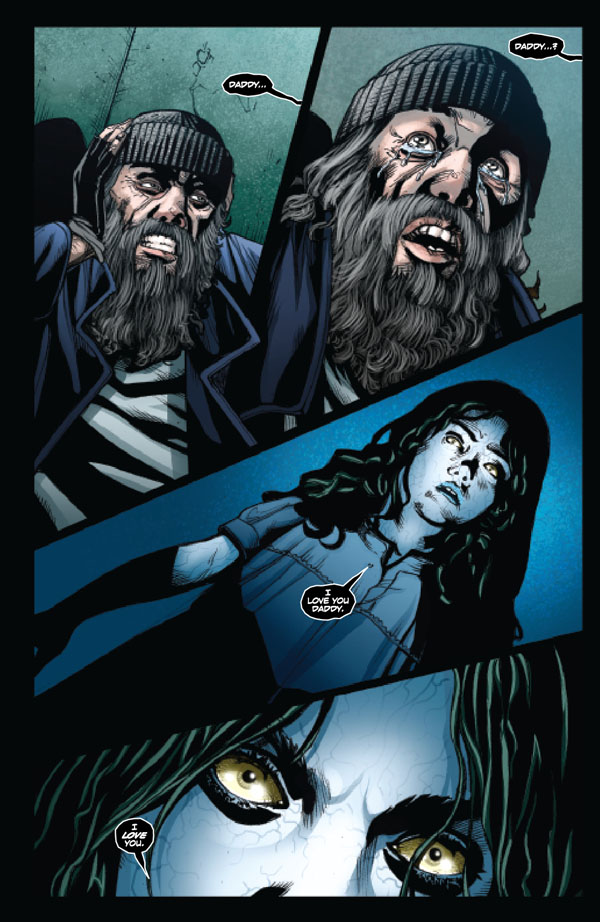 TFAW.com: The Waking is a zombie story with a twist, however–these zombies are avenging their own murders. How did this affect your art, if at all?
TFAW.com: The Waking is a zombie story with a twist, however–these zombies are avenging their own murders. How did this affect your art, if at all?
VD: Actually, the twist of the story is what made me feel more comfortable about a genre I never thought I'd be drawing as a professional, prior to the project. Realizing that these weren't your usual zombies woken from dead, wandering around the streets and terrorizing the city, helped me to better define their look. That's why I went with a softer approach–if I may say so–and closer to their human form. These were victims! People who died violently from the hands of various kinds of murderers. So yes, it definitely had an influence on my art and rendering of the zombies.
TFAW.com: You had to cover a lot of ground with The Waking: beautiful women, adorable zombie children, and then the zombies themselves. How did you approach it?
VD: I simply took them one at the time. I gave each of them the attention needed when they needed it. It was a challenge, but I actually had fun and enjoyed having to draw such a variety of characters, from humans to zombies, children to grownups, and women to men. It was such a rich palette that no artist could have refused. Only instead of mixing colors, you were mixing all kinds of different characters and playing with them. And this was all Raven's merit. The way he covered this variety of characters is extraordinary.
TFAW.com: Can you tell us about your process, when it comes to drawing interiors?
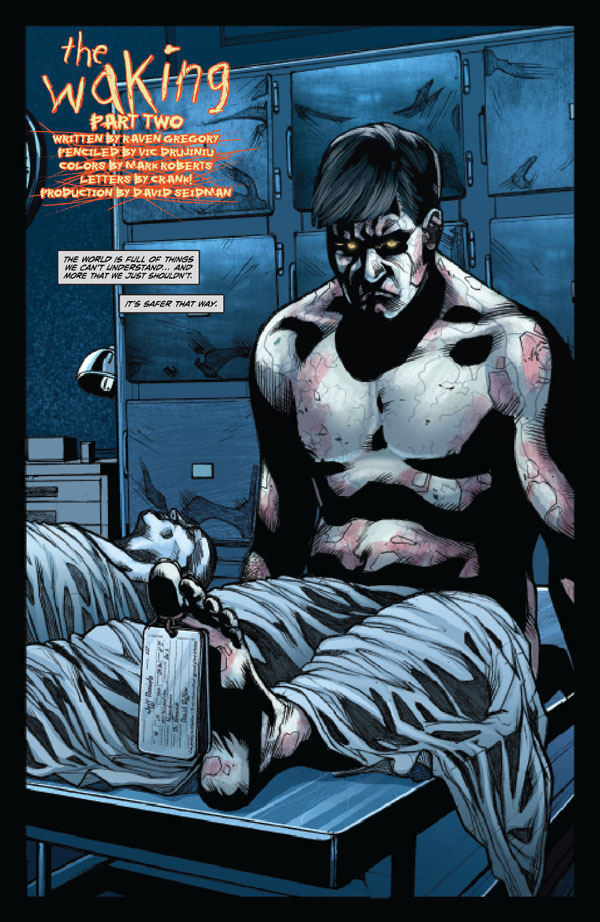 VD: Well, I think it is very similar to other artists' processes. Once you receive the script, you start making the layouts for every page and then send them to the editor. The batch of layouts comes back with the editor's notes. After that you begin the process of getting to the finalized pages.
VD: Well, I think it is very similar to other artists' processes. Once you receive the script, you start making the layouts for every page and then send them to the editor. The batch of layouts comes back with the editor's notes. After that you begin the process of getting to the finalized pages.
First I do a very thorough research for references on the Internet, starting from the characters and all the way to objects, backgrounds, and interiors. This is a very meticulous and both time- and patience-consuming process. I hope I'll be able to pay an assistant to help me with this in the future, as it can cause issues where meeting the deadline is concerned.
Then I start putting the pieces together in Photoshop, just like in a puzzle. I use the right angled faces of the characters and the backgrounds, and collage them over the initial layout of the page. I print it and make the final page based on it, using the lightbox.
TFAW.com: You've got a great dark, brooding style. Has that style always called to you? Who are your influences?
VD: My style is the result of many years of practice and influences over the time. I used dark shadows ever since I started drawing my own characters, pages or pinups. But of course the way it looks has changed over the years. My first and very significant influences during middle school, but mainly during high school, were Marc Silvestri, Jim Lee and Dwayne Turner. But when I got into Faculty, I started expanding my horizons, exploiting and experimenting with my own style.
I started to discover and look up to a whole new type of artists; more naturalistic ones, such as Travis Charest, Alex Ross, Frank Cho and Adam Hughes. At the same time, Marvel launched their Ultimate titles and brought to my attention a few new artists that were decisive in establishing my style and taste: Brian Hitch, Stuart Immonen and the lately discovered talent that is Olivier Coipel. This way you made me enumerate not only my favorite artists, but the most important influences in my art. And I am still learning . . .
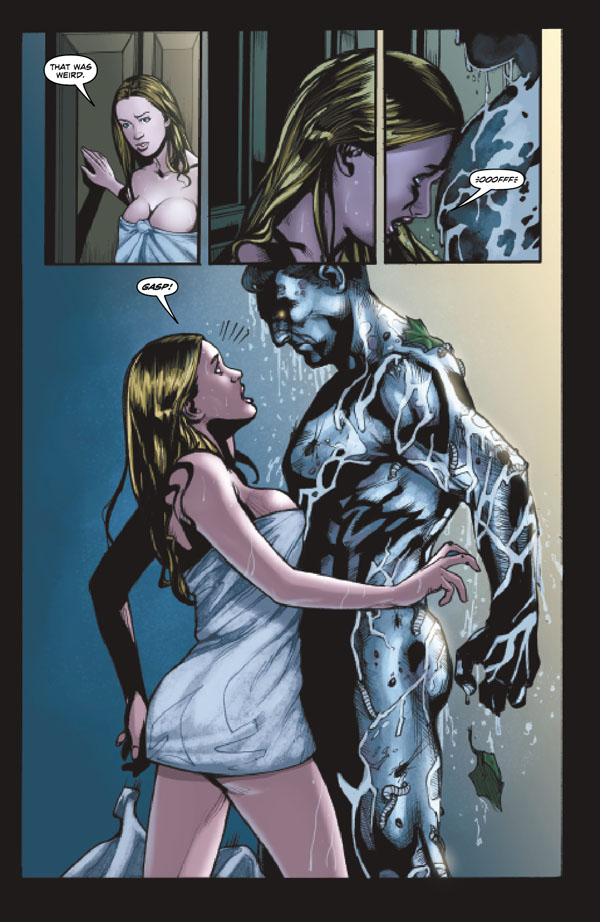 TFAW.com: What do you think about, in terms of composition?
TFAW.com: What do you think about, in terms of composition?
VD: I try to think of the page as a whole, regardless if it's a splash page or if it has maybe 10 panels. I try to compose them into one whole that represents the final page. In doing so, I use some of the composition techniques I learned in school or saw on the above-mentioned artists, and of course improvisation, too. All these elements combined help me make the composition of a page.
TFAW.com: What was it like, working with Raven Gregory?
VD: Working with Raven has been a very pleasant experience, as well as a learning one. We clicked very well from the beginning of our collaboration and that made it easier along the way. We got along perfectly and kind of both knew what the other wanted or liked, thus making the working experience a very pleasant one. Raven was very helpful, open and understanding, not only regarding the project but generally. He helped me understand some things and learn from them. Overall, it was a great experience.
TFAW.com: Your portfolio has a multitude of different character pinups, including superheroes. What genres do you want to work on in the future?
VD: The answer lies within your question ![]() I definitely want to work on superhero titles. Both DC and Marvel have a multitude of heroes and teams I'd love to draw. But I'm open to any kind of projects or genres.
I definitely want to work on superhero titles. Both DC and Marvel have a multitude of heroes and teams I'd love to draw. But I'm open to any kind of projects or genres.
TFAW.com: What's coming up that you're most excited about?
VD: I just finished a tryout for XXXXXX, in order to take over starting XXXXXXXX. So for the moments, I am very excited at the thought that I might get to work on such a popular title.
We want to thank Victor for helping us close out Zenescope Month! Check out our preview of The Waking here, and pre-order the trade paperback today to save 20%.
Are you a fan of zombie stories? What do you think of Victor Drujiniu's art? Post your comments below!
